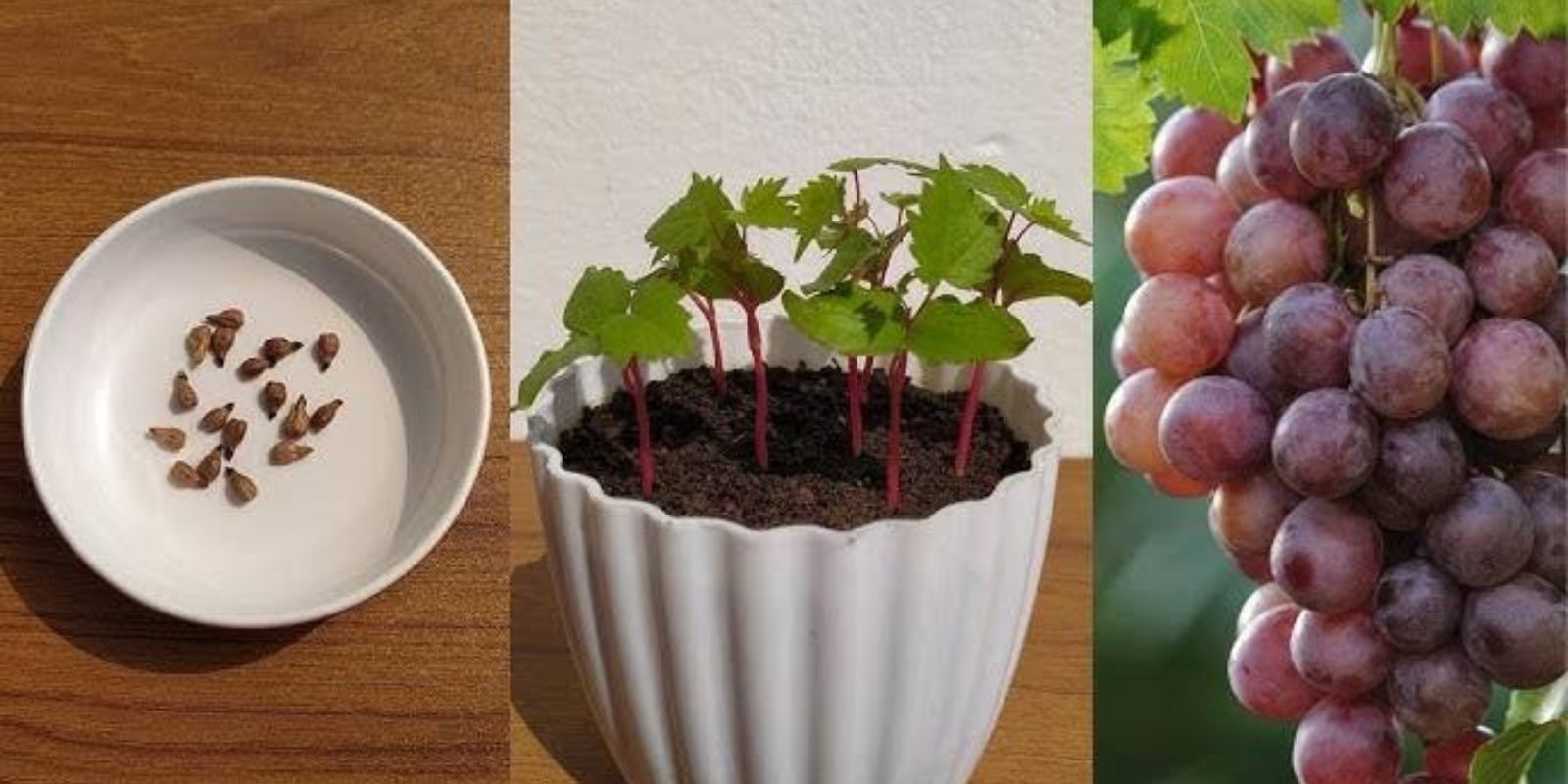Grapes are a timeless symbol of abundance, and growing your own vines at home can be both rewarding and enjoyable. While many gardeners opt for cuttings, cultivating grapes from seeds is a unique experience that allows you to start from scratch and nurture your plants every step of the way. Whether you’re an urban gardener with limited space or just looking to explore a new gardening challenge, this guide will walk you through the steps to successfully grow grapes in containers.
Why Grow Grapes from Seeds?
Growing grapes from seeds provides several benefits:
- Unique Varieties: By starting from seeds, you can experiment with different grape varieties not commonly available as cuttings.
- Sustainability: It’s an eco-friendly way to make use of seeds from store-bought grapes or homegrown fruits.
- Sense of Accomplishment: Watching a grapevine grow from a tiny seed into a flourishing plant is deeply satisfying.
Although it takes longer to see results compared to planting cuttings, the process is immensely gratifying for patient gardeners.
Step-by-Step Guide to Growing Grapes from Seeds in Containers
1. Select the Right Seeds
The first step is choosing grape seeds from varieties that thrive in your climate. You can collect seeds from ripe grapes bought from the market or purchase them from a reliable seed supplier. If using store-bought grapes, ensure they are not hybrids, as hybrid seeds may not produce true-to-type plants.
2. Prepare the Seeds
Before planting, it’s crucial to prepare the seeds:
- Remove the seeds from the grapes and rinse them thoroughly to eliminate pulp residue.
- Soak the seeds in room-temperature water for 24 hours. This softens the seed coat and increases germination chances.
After soaking, dry the seeds lightly with a paper towel.
3. Stratify the Seeds (Optional for Dormant Seeds)
Stratification mimics winter conditions and can improve germination:
- Place the seeds in a damp paper towel and seal them in a plastic bag.
- Store the bag in the refrigerator for 6–8 weeks.
- Check weekly to ensure the paper towel remains moist.
Once stratification is complete, the seeds are ready for planting.
4. Choose Suitable Containers
Select large containers (at least 12 inches deep and wide) with good drainage. Grapevines have deep root systems, so ample space is essential for healthy growth.
Fill the containers with a well-draining potting mix enriched with organic compost. If possible, use a soil mix with a pH between 6.0 and 6.5, as grapes prefer slightly acidic to neutral soil.
5. Plant the Seeds
- Make small holes about 1 inch (2.5 cm) deep in the soil.
- Place one seed in each hole, ensuring they are spaced apart to avoid overcrowding.
- Cover with soil and water thoroughly.
Place the containers in a warm, sunny location. A south-facing window or balcony is ideal.
6. Provide Adequate Sunlight
Grapevines thrive in full sun, requiring 6–8 hours of direct sunlight daily. Position the containers in a location where they can receive ample light. If sunlight is limited, consider using grow lights to supplement natural light.
7. Watering Tips
Maintain consistent moisture in the soil, but avoid overwatering. Grapevines do not like soggy soil, so ensure the containers have good drainage. Water when the top inch of soil feels dry to the touch.
8. Support for Growing Vines
As the seedlings grow, they will need support to climb. Install trellises, stakes, or other supports in the containers. Training the vines to climb will encourage healthy growth and make harvesting easier in the future.
9. Fertilization
Feed your grapevines with a balanced fertilizer every 4–6 weeks during the growing season. Organic options, such as compost tea or slow-release granular fertilizers, work well. Avoid over-fertilizing, as this can lead to excessive foliage growth at the expense of fruit production.
10. Pruning for Healthy Growth
Pruning is essential to maintain the structure of the grapevines and promote fruiting:
- Remove dead or diseased wood.
- Train the vines to grow with a single main stem.
- Regularly prune excess side shoots to direct energy toward fruit production.
Pruning should be done during the dormant season (late winter or early spring).
11. Patience for Fruit Production
Grapevines grown from seeds typically take 2–3 years to bear fruit. During this time, focus on nurturing healthy vines by providing optimal care. When the plant starts to fruit, harvest grapes when they are fully ripe, with vibrant color and sweet flavor.
Common Challenges and Solutions
1. Pests and Diseases
Grapevines can attract pests like aphids and diseases like powdery mildew. To manage these:
- Use neem oil or insecticidal soap to control pests.
- Ensure good air circulation around the vines to prevent fungal diseases.
2. Overwatering
Excessive watering can lead to root rot. Always allow the topsoil to dry slightly before watering again.
3. Poor Germination
If seeds fail to germinate, ensure you’ve followed stratification steps properly. Additionally, fresh seeds tend to have better germination rates.
Benefits of Growing Grapes in Containers
- Space-Saving: Perfect for urban gardeners with limited outdoor space.
- Portability: Containers can be moved to optimize sunlight and protect plants from extreme weather.
- Aesthetic Appeal: Grapevines add beauty to patios, balconies, or small gardens.
Conclusion
Growing grapes from seeds in containers is a rewarding experience that combines patience, care, and skill. While it may take time to see results, the process of nurturing grapevines from seed to fruit is deeply fulfilling. With the right techniques, you can enjoy sweet, homegrown grapes and even turn your space into a mini vineyard!
Have you tried growing grapes at home? Share your tips and experiences in the comments below!

